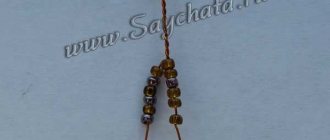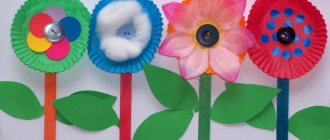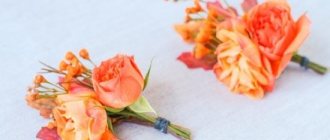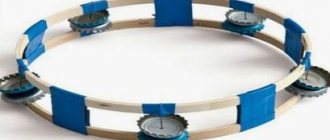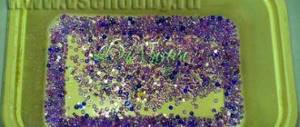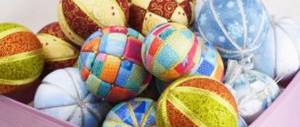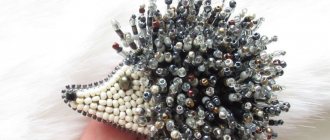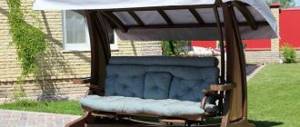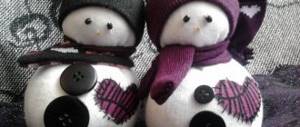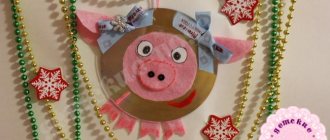LiveInternetLiveInternet
—Categories
- DECOUPAGE (1639)
- My MKs and articles on decoupage and decoration. (26)
- My works (51)
- MK on decoupage and decoration from the Internet (129)
- Reference material (95)
- Interesting decoupage ideas from the Internet (40)
- Little tricks (7)
- Pictures for decoupage (946)
- Pictures for decoupage, vintage, retro (281)
- Pictures for decoupage for New Years (45)
- Openwork frames, lace, patterns, ornaments (39)
- PAINTING (239)
- My works. (2)
- MK painting (38)
- Pictures and ornaments for painting (191)
- PHOTOSHOP (180)
- My tutorials on online photoshop. (eleven)
- My works in Photoshop (3)
- My FS lessons (17)
- Author's prints for decoupage. (25)
- Photoshop tutorials (59)
- Backgrounds (43)
- Decoration and design (17)
- Digital Art (3)
- HAND MADE (672)
- Ideas for inspiration (489)
- Various utilities (87)
- Working with plaster (37)
- Kanzashi (29)
- Soutache decorations (14)
- Patchwork (12)
- Terra technique (5)
- Jewelry (4)
- CLIPARTS (99)
- Others (34)
- Flower and fruit cliparts (27)
- New Year, Christmas (21)
- Vintage (16)
- Decoration cliparts (3)
- Easter clipart (2)
- Book clipart (1)
- SCRAP KITS (83)
- IN THE WORLD OF BEAUTIFUL (907)
- Porcelain, ceramics, glass (169)
- Painting. Still lifes and flowers (162)
- Painting2 (127)
- Painting (115)
- Painting. Genre (69)
- Painting. Fauna. (58)
- Painting. Landscapes. (54)
- Painting. Portraits. (42)
- Miniature (28)
- Icons (19)
- Surrealism (19)
- Cloisonné (11)
- Batik (6)
- Woodwork (4)
- Stone crafts (2)
- ANTIQUES (131)
- EMBROIDERY (124)
- Embroidery patterns (77)
- Ribbon embroidery (37)
- SEWING (34)
- Useful sewing tips (15)
- KNITTING (51)
- Crochet (38)
- Knitting (2)
- Romanian lace (2)
- BEAD (17)
- Lessons on working with beads (7)
- POLYMER CLAY, COLD PORCELAIN. (125)
- SOAP MAKING (17)
- Essential oils (1)
- ART OF PHOTOGRAPHY (5)
- Photography Basics (3)
- Works by photographers (2)
- INTERIOR (67)
- Interior Decor Ideas (66)
- FLORISTRY (4)
- Revelure (2)
- Bouquet decoration (1)
- GARDEN (81)
- My garden (5)
- Garden ideas (35)
- Flowers (20)
- Educational articles and videos (23)
- COOKING (323)
- Baking (154)
- Blanks (39)
- Salads (36)
- Snacks (24)
- Vegetable dishes (23)
- Hot poultry and meat dishes (22)
- Fish dishes (10)
- Desserts (10)
- Soups (3)
- Recipes for air fryer and multicooker (3)
- Drinks (1)
- HOUSEHOLDING (2)
- Useful tips (2)
- FOR YOURSELF (20)
- Health (7)
- Tips for a comfortable life (1)
- LITERARY (6)
- Poems, stories, reflections (4)
- CARDS AND SMILES (9)
- “Thank you” cards and emoticons (5)
- Happy Birthday: 3)
- KITTY (7)
- MUSIC (1)
- PROGRAMS, EDITORS, UTILITIES FOR LIRU (46)
- Notice board (0)
Cat flowerbed
This cute flowerbed cat is made from a plastic bottle and cement.
We will need: cement, sand, plaster, water, large plastic bottle, wire, paint, wooden slats, varnish.
The owner of this cat, Natasha Koneva, will tell us how to make such a funny figurine with her own hands. We cut off a plastic bottle - this container will be our flower garden. To prevent the cement from slipping off the plastic, we tightly wrap it with wire. We knock down a wooden frame from slats. We attach our plastic container to it.
Mix the cement mortar with the consistency of thick sour cream at the rate of 1 part sand, 1 part cement. We will add gypsum only to the finished portion that we have in our hand, because... the solution with gypsum hardens instantly. We work in rubber gloves.
Take a handful of solution in your hand and add a tablespoon of gypsum to it. Knead it in your hands, roll it into a sausage and attach it to the frame. So, step by step, we apply portions of the solution on top of each other, creating the necessary bulges and smoothing the surface.
Clay casting! Master Class!
I've been wanting to try doing something like this for a long time! But they still couldn’t get around to it! And here everything is described in such detail that it seems that I can easily make not only bells for the New Year , but even some kind of pots or boxes... well, with this technique it’s easily possible!
In the meantime, here’s a new Master Class from the “Country of Masters” (link below) and be sure to try it!
I’m sure your New Year’s Bells will turn out even more beautiful and ringing!
First you need to make a plaster mold for casting. I saw MK from Cvetovod, but I prepare the form more simply.
I mix plaster or alabaster from any hardware store, use cups of sour cream, buckets of mayonnaise, boxes of juice, milk, or make boxes from corrugated cardboard using tape... I lubricate the copying vessel (bell or vase) with machine oil, or with greasy cream or Vaseline . I seal the hole with plasticine. The walls of the mayonnaise bucket should also be greased with oil.
I immerse the bell in the gypsum solution and wait for it to harden.
When the plaster is sufficiently strong and warm, you can remove the bell. If the plaster “caught” the edge of the bell a little, you can carefully clean it off with a knife.
Remove the glass. If you used a mayonnaise bucket (polypropylene), turn it over and press on the bottom, the mold will come off perfectly, and the bucket can be used again. The plaster mold must be thoroughly dried (2-3 days).
Molds for vases should be made of two parts. Seal holes and depressions with plasticine. First press the vessel halfway into the gypsum solution (to the widest part), and allow the plaster to harden. Lubricate the hardened edge of the plaster with oil or Vaseline and pour in a second portion of plaster so that it completely covers the vessel. The hole sealed with plasticine must be leaned against the wall of the box (if you fill the vase sideways) so that there is a hole in the plaster mold. After hardening, remove the plaster mold and use a knife to divide it into two (three) parts.
Soak the clay for 2 - 3 days, mix well until it reaches the consistency of sour cream (the mixer produces a lot of splashes, so I mix it manually with a paddle).
Original do-it-yourself flower beds
Are you not a sculptor at all? But believe me, you can make these creative flower containers.
We need a plastic container, foam plastic, reinforcing mesh. We make a cement solution by adding a spoonful of gypsum directly into the palm with the solution and thus form our “sculpture”
But not all of us are fans of modern abstract art. You can easily make garden crafts in a classic style.
But, because You are not a sculptor yet, you need a template - it could very well be an old doll.
Because If this is not just a decorative garden figurine, but a flower bed in the shape of a girl’s head, then the top part needs to be cut off.
Then the head is painted. To add texture, the template is first painted with dark gray paint. Allow to dry and apply a layer of lighter paint. After drying, apply a layer of even lighter paint with light strokes.
This is a very simple process, and all the examples of this style that you see in the article were made by teenagers in a craft class.
DIY plaster caterpillar
You can plant this type of caterpillar on a fungus (reduced), or make it a separate element of the decor of your “fairytale” garden. To make it you will need:
- Gypsum diluted to the consistency of liquid sour cream;
- Waterproof glue;
- Acrylic paints;
- Priming;
- Varnish;
- Brush.
Stages of creating a figure - plaster caterpillars:
- Make several flattened circles of various shapes (10 pieces may be enough);
- Make two small (or large) balls for your caterpillar's eyes;
- Let all the track components dry;
- Glue them together in any order, giving the caterpillar body any shape you like. Glue eyes to the large round head;
- Prime the entire track thoroughly and let dry for two hours;
- Paint your fairy caterpillar beautifully with acrylic paints. Let them dry thoroughly;
- Carefully varnish the finished caterpillar. Let it dry thoroughly and you can safely install it in the right place!
Features of casting figured gypsum parts
I hope that the process of creating a fungus and a caterpillar did not seem too labor-intensive to you, but rather aroused in you an increased desire to create with your own hands! This is exactly the result we sought, hoping that soon you will share with us your new figures, which you yourself invented and made for your country decor with your own hands!
Probably each of us dreams of creating something unusual to decorate our home or garden. Store shelves are filled with a variety of figures and figurines, which many people do not have the opportunity to buy. In such cases, you can easily make crafts with your own hands. For such creativity, no special skills are required, just desire and a little imagination, and everything will work out. In this article you will learn how to make crafts from plaster with your own hands for the garden.
First, you need to examine all the places where you would like to place plaster figures, and then choose the most suitable ones or, based on our design, come up with something yourself. These could be just figurines for decorating the garden, or they could also be useful crafts.
How to effectively use garden crafts
Plan in advance where to place the figures in the garden. This will make it easier for you to determine the exact size and color of the garden figurine.
Decide what style your garden will be. No matter how beautiful your garden crafts are, they should be in the same style.
Don't overload your garden with crafts. A few simple but funny garden figurines in advantageous places in the garden will make a greater impression than an ill-conceived mass of the most wonderful and interesting garden crafts.
Coordinate the size of the figurine and the garden. Large open spaces require larger figures. And small garden figurines can be interestingly placed near tree trunks, near a small pond or fountain, along garden paths.
DIY garden crafts will add more interesting details to the overall look.
Using such a quickly hardening material as gypsum, today we will learn how to make a fungus figurine for the garden with our own hands. Detailed photographs and step-by-step instructions will help you cope with this task.
Basically, to make plaster figurines for the dacha, special, ready-made molds are most often used, which are sold in a large assortment in the store. Using ready-made molds greatly simplifies our task; you just need to properly dilute the plaster, pour it into the mold and wait for it to harden! But we don’t always have these same molds on hand, we can’t always afford to purchase them, so we’ll talk about creating a mushroom figurine from scrap materials.
Flowerbed cat
To create such a figurine we will need the following materials:
- Plastic canister;
- Cement;
- Sand;
- Gypsum;
- Several wooden planks;
- Wire;
- Water-based paint or car paint;
- Varnish;
- Latex gloves;
- Sandpaper;
- Water.
Step 1
First you need to cut the plastic canister as shown in the photo. We would like the frame of the figurine to be made from wooden planks. We wrap the canister with wire to strengthen our craft.
Step 2
Now the next step: how to dilute plaster. Rubber gloves must be worn. We will mix the cement mortar in the proportion of 1 part sand and 1 part cement, and we will add gypsum only to the portion that is in our hand.
Take a handful of solution in your hand and add a spoonful of gypsum to it, knead a little in your hands, roll it into a sausage and attach it to the frame. Apply portion by portion, making the necessary bulges, smoothing the surface.
Step 3
We sculpt the cat's face. This is where your imagination comes in. We sculpt small parts separately.
Before gluing them to the main frame, you need to lubricate the surface with water for better adhesion of the solution.
Step 4
We put our hand in the water and polish our cat, smoothing out the unevenness. Next, cover with cellophane for 4 days to allow the figure to dry. The first day we moisten the surface of the craft with water. After drying, sand the surface with sandpaper.
Step 5
There is very little left. We paint the figurine with the prepared materials, and then varnish it. You can leave the coloring process for the children, let them show their imagination, and thereby you will spend time together.
We got such a wonderful figurine for the dacha. Remove the cat from the street every winter, otherwise the cement may crack.
Mushrooms, gnomes, various insects, butterflies and others are also very popular. If the planned figures are small in size, then you can use silicone molds to make them. Before pouring the solution into the mold, it must be lubricated with silicone so that the finished product can be easily removed from the mold.
